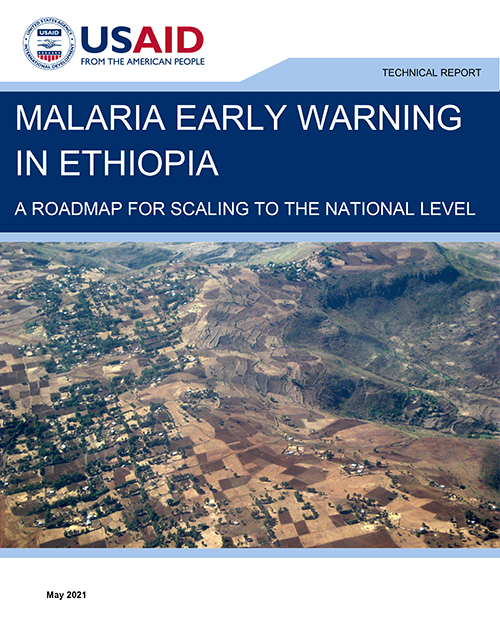Development programs worldwide are designed to protect vulnerable people, places, and livelihoods from climate change, but with smarter methods, these programs could be even more effective.

Malaria Early Warning in Ethiopia: A Roadmap for Scaling to the National Level .
Project Report | May 1, 2021

This report highlights the importance of integrating climate, weather, and environment data into malaria surveillance tools.
Climate change presents a significant threat to reducing the burden of malaria globally and in Sub-Saharan Africa, which, despite tremendous progress, continues to have a devastating impact on human health and livelihood throughout the world. Changes in temperature, precipitation and in the frequency and intensity of extreme weather events will alter the nature of malaria and other water- and vector-borne diseases, placing more people at risk of exposure. In Ethiopia, malaria poses a unique challenge for the government, which is working tirelessly toward malaria elimination. Increased temperatures are shifting malaria incidence to the highlands and to communities that have previously had very limited exposure to the disease.
Responding to the government’s challenge, and as part of an extensive investment in the climate-health nexus, the USAID Adaptation Thought Leadership and Assessments (ATLAS) project partnered with the USAID/Ethiopia Mission, President’s Malaria Initiative (PMI), and University of Oklahoma (OU) to support the scaling up of an existing malaria early warning system in Ethiopia: the Epidemic Prognosis Incorporating Disease and Environmental Monitoring for Integrated Assessment (EPIDEMIA) tool. This report by OU and ATLAS presents a roadmap for scaling up EPIDEMIA and concludes that implementing a sustainable malaria early warning system to a national level in Ethiopia is both necessary and feasible. The report highlights the importance of integrating climate, weather, and environment data into malaria surveillance tools, and concludes that addressing malaria’s changing risk profile in Ethiopia – and globally – will require the use of predictive early warning tools coupled with public health stakeholder engagement and commitment, allowing both policy makers and practitioners to adapt programmatic approaches and specific interventions in response to changes in climate.
